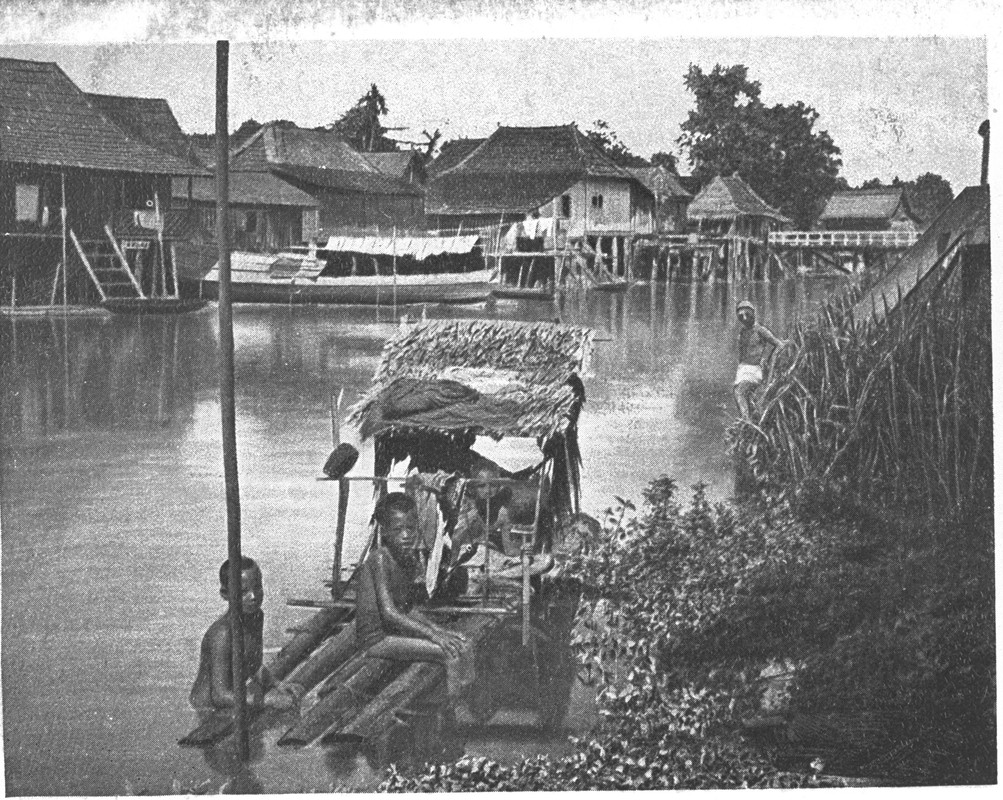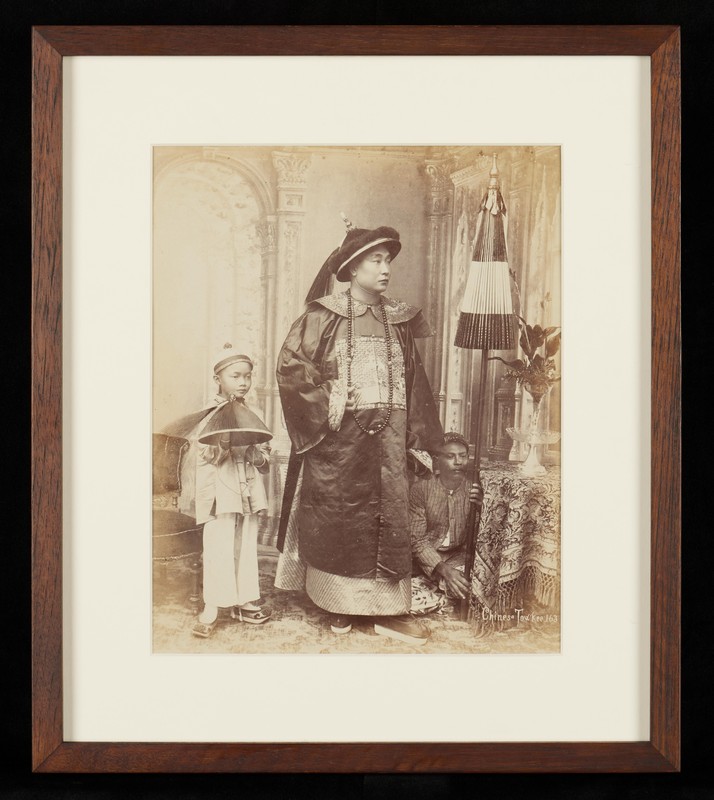The Peranakan Chinese in Singapore
The term “Peranakan” (from “anak”, the Malay word for “child”) generally refers to the descendants of immigrants who married indigenous women in the Malay Archipelago.
While “Peranakan” is often used interchangeably with “Straits Chinese” in Singapore, not all Straits-born Chinese were Peranakan. Not all Peranakans had Chinese ancestors, either. Besides the Chinese Peranakans, there were also smaller communities such as the Bugis Peranakans, Arab Peranakans, Java Peranakans, Chitty Melaka, and Jawi Peranakans.
This article focuses on the Peranakan Chinese. For brevity’s sake, all subsequent mentions of “Peranakan” will refer specifically to this group.
Peranakans in Singapore
Most of the Peranakans in Singapore are descended from the Peranakans of Malacca, who typically spoke Baba Malay (creolised Malay) and English (for those who were English-educated). This was unlike the Peranakans in Penang, who conversed in Malayanised Hokkien and English. Male and female members of the community are known as Babas and Nonyas (or Nyonyas) respectively, although “Baba” can also refer to the Peranakan community as a whole.

Their Chinese ancestors were mostly immigrant men from Fujian and Guangdong who settled in Malacca in the 15th to 17th centuries, where they married local Malay women. Their descendants then married fellow Peranakans, or the new Chinese immigrants who arrived in Southeast Asia in the 19th century.1
In 1848, Singapore had about 1,000 “Malacca Chinese” — according to one estimate by Seah Eu Chin (1805–1883), a prominent merchant who became part of the Peranakan community through marriage. In comparison, there were 9,000 other Hokkiens, 19,000 Teochews, 6,000 Cantonese, 4,000 Hakkas and 700 Hainanese on the island. The 1,000 Malacca Chinese comprised 300 “merchants and shopkeepers and their people”, 100 “cash keepers and others employed by Europeans”, 300 “householders employed variously”, 200 “petty traders”, and 100 “agriculturalists”, Seah noted.2
Besides being traders and shopkeepers, many Peranakans were involved in shipping, banking, and real estate. One of Singapore’s most famous Peranakans was the merchant and philanthropist Tan Tock Seng (1798–1850), who had arrived from Malacca as a vegetable seller in 1819, the year the British set up a trading post in Singapore.
The “Golden Age” of the Peranakans spanned from the 1830s to 1930s, when they enjoyed the most economic and political power. Mostly English-educated, they enjoyed a symbiotic relationship with the British colonial administrators and traders in Singapore, playing the role of middlemen between them and the rest of the population. They identified as British subjects. In 1900, a group of prominent Peranakan Chinese set up the pro-British Straits Chinese British Association (SCBA). By aligning themselves with the British, the Peranakans distinguished themselves from the sinkeh, or new immigrants from China.
At the time, many of Singapore’s wealthy people were Peranakan. Besides Tan Tock Seng, there were prominent figures such as Tan Kim Seng (1805–1864), See Hoot Kee (1793–1847), Gan Eng Seng (1844–1899), Song Ong Siang (1871–1941) and Cheang Hong Lim (1825–1893). Many Peranakans gave generously to the community, donating funds for public welfare and the construction of institutions such as Thian Hock Keng Temple (1839), Tan Tock Seng Hospital (1844) and the Singapore Chinese Girls’ School (1899). Even as they aligned themselves with the British, some of them retained ties with their ancestral homeland. Tan Beng Swee (1828–1884), for example, contributed to famine relief in China. See Ewe Lay started Lat Pau (1881–1932), one of Singapore’s earliest Chinese daily newspapers in Singapore, despite having been English-educated.
Inside the Peranakan house
The Peranakans in Singapore lived mainly in Neil Road and Tanjong Pagar, later extending their reach to Katong, Joo Chiat, and Emerald Hill. They inhabited terraced shophouses fronted by a continuous sheltered walkway known as a “five-foot way”. Enter through the pintu pagar (a half-height, ornamented “fence door”) and front door, and you might find yourself in a front hall with an ancestral altar. Venturing further down the long and narrow interior would lead you to the living room, air-well and kitchen. Teak and rosewood furniture, statuettes of fu lu shou deities, and porcelain — blue and white “kitchen porcelain” from China or Japan; or pastel porcelain (nonyaware) imported from Jingdezhen in Jiangxi, China, often sporting phoenix motifs — were a common sight within the Peranakan home. Popular parlour games ranged from cherki, involving cards; to congkak, played with 98 cowrie shells, and a long wooden board with two large cavities or rumah (houses) at either end, and another 14 smaller cavities in two parallel rows in between.
Peranakan families were not as strictly patriarchal as many Chinese households, although they subscribed to the traditional idea of nan zhu wai, nü zhu nei (“men manage outside, women manage inside”). The house was the domain of the women, who was appraised for her cooking, embroidery, and beadwork skills. However, it was not uncommon for new immigrant men to marry into his bride’s Peranakan household, a practice known as chin choay. And after the death of the patriarch, it was his wife, rather than the son, who became the new head of the family. In Singapore, Nonyas were among the first females to receive formal education at institutions such as the Singapore Chinese Girls’ School.
Many early Peranakans dressed in traditional Chinese clothing, although Babas started wearing Western-style coats and trousers starting in the late 19th century. Nonyas, meanwhile, wore a distinctive garment known as the nonya kebaya — which outstripped the baju panjang (“long dress”) in popularity from the 1920s onwards. The nonya kebaya top, which was more tight-fitting and less opaque than the Malay kebaya, often featured lace, embroidered motifs such as peonies, butterflies and roses. The nonya kebaya, which had no buttons, was fastened by a set of (usually three) interlinked brooches known as a kerosang and worn with a batik sarong skirt and beaded slippers.



Peranakan food is known for its long preparation time. Besides ingredients such as garlic, ginger and soy sauce which feature heavily in Chinese cuisine, it often incorporates coconut milk, spices (rempah), seeds of the buah keluak fruit, shrimp paste (belacan), candlenut (buah keras), lemongrass (serai), and kaffir lime leaves. Out of the Nonya kitchen might come delicacies such as babi pongteh (braised pork in salted bean paste), ayam buah keluak (chicken in spicy tamarind gravy with buah keluak nuts), and an assortment of kueh (cakes) whipped together from coconut, palm sugar (gula melaka) and other ingredients. In the early days, many Nonyas also liked to chew on betel leaves. The early Peranakans in Singapore ate rice using their hands rather than chopsticks. However, chopsticks were used at ancestral offering tables, and by newlyweds during a ceremony known as chim pang.


Weddings and funerals
Peranakan weddings were known for their elaborate rituals, which traditionally lasted for 12 days (a practice that fell out of popularity after World War II). Many of the customs were similar to those in China — such as the choice of an auspicious hour, a gift-giving ceremony, and a tea ceremony. However, there would also be a Malay master-of-ceremony known as a pak chindek, and a performance of dondang sayang (“love ballad”), where the bride and groom sang pantun (Malay poetic verses) to each other while a small band of musicians played the violin, rebana drums and gong in the background. A joget dance, featuring dancing girls, might then follow.
When a Peranakan person died, the funeral would involve Chinese traditions — with a wake, night vigils, offerings, burning paper money for the deceased, as well as the wearing of sack cloth by their children, spouses of the children, and paternal grandchildren.
Peranakan culture today
Some commentators have described Peranakan culture as “dying”, suggesting that it is becoming the stuff of museums. Most of the traditions, for instance, are no longer a part of daily life for contemporary Peranakans. The Baba Malay language is critically endangered in Singapore, where most of the younger Chinese population only speak English and Mandarin. Furthermore, religious practices of early Peranakans (who practised ancestral worship, and prayed to deities such as Guanyin, Mazu, and Tua Pek Kong), have also been on the decline since the early 20th century, giving way to Catholicism, Christianity and atheism.
There are several organisations in Singapore dedicated to promoting Peranakan culture. Among them are Peranakan Museum, which opened in 2008 in the former Tao Nan School building; The Peranakan Association (formerly the SCBA, established in 1900); and the Gunong Sayang Association (established in 1910), which promotes performing arts such as dondang sayang and wayang peranakan. The NUS Baba House in Neil Road, and private museum The Intan in Joo Chiat, also offer a glimpse into the Peranakans’ rich material culture. In recent decades, there has been some resurgence of public interest in Peranakan culture, thanks in part to the popular television drama The Little Nyonya (2008), as well as efforts spotlighting Peranakan culture as a distinctive part of Singapore’s multicultural fabric.
| 1 | Ng Fooi Beng. “Peranakan community and culture”, in A General History of the Chinese in Singapore, edited by Kwa Chong Guan and Kua Bak Lim (Singapore: Singapore Federation of Chinese Clan Associations and World Scientific Publishing, 2019), 258. |
| 2 | Seah Eu Chin. “The Chinese in Singapore II: General sketch of the numbers, tribes, and avocations of the Chinese in Singapore”, in Journal of the Indian Archipelago and Eastern Asia, Vol. 2 (1848), 283–289. See also Kwa Chong Guan, “The colonial state in the making of a Peranakan community”, in A General History of the Chinese in Singapore, edited by Kwa Chong Guan and Kua Bak Lim (Singapore: Singapore Federation of Chinese Clan Associations and World Scientific Publishing, 2019), 233–243. |
“Babas and Nonyas: The Peranakan Chinese in Singapore”. BiblioAsia Vol 2, Issue no. 4 (Jan 2007). | |
Chia, Felix. The Babas Revisited. Singapore: Heinemann Asia, 1994. | |
Koh, Jaime. “Peranakan (Straits Chinese) community”. Singapore Infopedia, National Library Board. | |
Kua, Bak Lim, ed. Xinjiapo huaren tongshi [A general history of the Chinese in Singapore]. Singapore: Singapore Federation of Chinese Clan Associations, 2015. | |
Kwa, Chong Guan and Kua, Bak Lim, eds. A General History of the Chinese in Singapore. Singapore: Singapore Federation of Chinese Clan Associations, World Scientific Publishing, 2019. | |
Suryadinata, Leo, ed. Peranakan Chinese in a Globalizing Southeast Asia. Singapore: Chinese Heritage Centre, NUS Baba House, 2010. |










